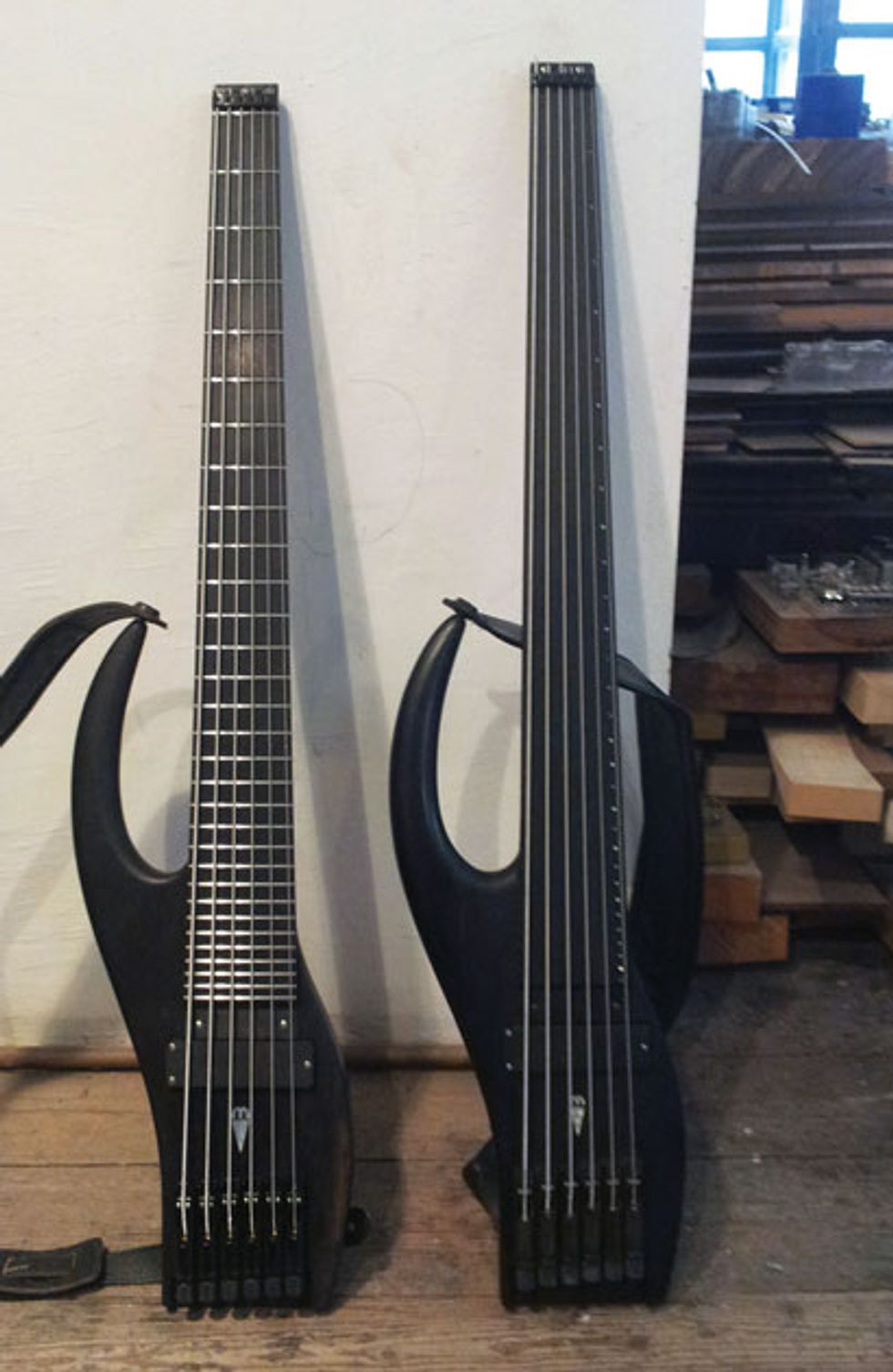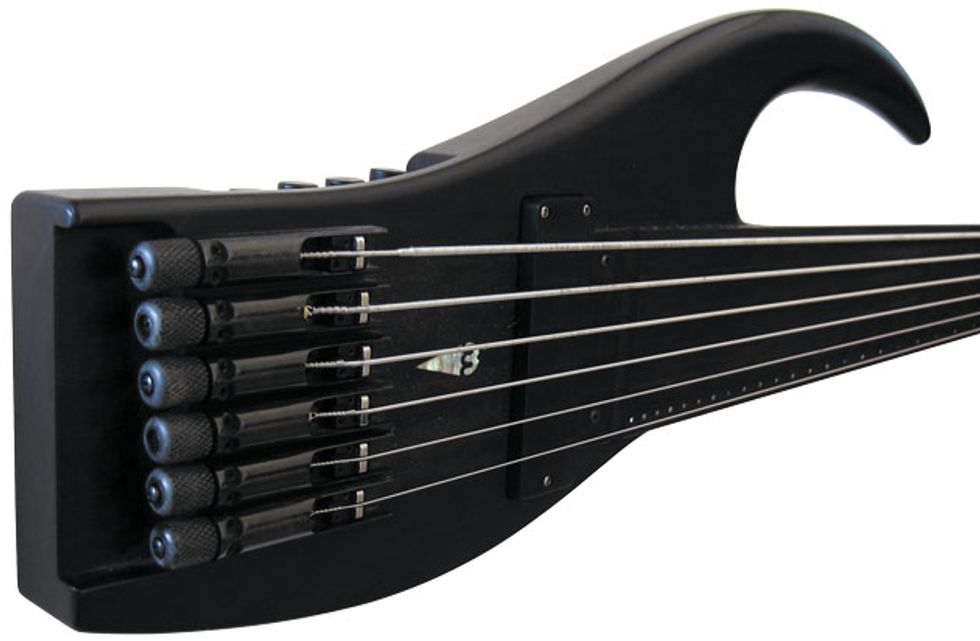What makes a headless design better than a traditional headstock?
Designed by Guenther Paal and built by Markus Kirchmayr, these headless basses are each made from a single piece of ebony. Photo courtesy markusguitars.at
We began exploring Ned Steinberger’s groundbreaking bass in my previous column [“Introducing the Headless Bass,” September 2014]. Let’s continue this journey by looking at how the headless bass was designed to solve several technical problems that dogged traditional electric basses.
Setting the stage. After he completed his design studies, Steinberger met luthier Stuart Spector and ultimately designed the Spector NS bass for him. Production on the NS model began in 1977 and the successful series is still being made today. The NS bass offered a more sculpted body than its predecessors, but it wasn’t the first to do so, and in no way were its sleek contours a radical departure in terms of functionality. But change was in the air.
When he began working on the NS design, Steinberger literally started from scratch. Because he wasn’t a bass player, he had to rely on Spector to provide a musician’s insights. For bass builders, it’s hard to know whether being a player is an advantage or not. Leo Fender wasn’t a player, so one wonders: Could that have made it easier to think outside the box and jettison the ballast of the past?
Fast forward to the L Series. After his initial success with Spector basses, Steinberger began designing his own instruments, and his radical L Series basses quickly put his company on the map. The headless L1 and L2 were much more than merely portable, full-scale instruments for the travelling musician. Besides the compactness of the headless design, the real advantage is the reduced string length, which improves tuning stability.
Another benefit: The tuners were located at the bottom of the body, and this helped avoid accidental detuning if you either hit a wall or bonked a fellow musician, or when you simply put the bass back in its case. Body-mounted tuners are always in easy reach, and this design focuses all heavy hardware at the end of the body, which results in better balance and eliminates neck dive. The tuners’ higher gear ratio bring a smooth accuracy to the tuning process—a real plus. The double-ball-end strings allowed for quicker restringing, and even the locking screws that appeared later at the headpiece are easier to handle than traditional tuners. Shifting the tuners to the body adds some weight to it, yet here a headless system isn’t very different from a high-mass bridge.
A modern homage to the Steinberger L Series bass. Photo courtesy basslab.de
Wait, there’s more: A headstock can interfere with the neck and cause dead spots. Not too many players would regret eliminating these problems by removing the headstock. Finally, there’s the (almost) one-piece body and neck made of a synthetic material. This construction makes the bass impervious to changes in humidity and temperature. Of course, we’ve put all sonic considerations aside for the moment, but—except for the material—the L Series’ technical advances didn’t have a huge influence on tone. So no cons so far.
The eyes have it. One would think that because the Steinberger was the most advanced tool a bassist could get, it could or should have eradicated all earlier designs. We know that bassists will never all play the same model, just because it’s practical. But you could imagine that once the market caught up with Steinberger, there would be a huge variety of headless instruments that kept all the advantages of the L Series while offering different woods or other body materials, as well as different pickups and body shapes.
In fact, there were several companies that jumped on the bandwagon and offered alternatives, including the unlicensed Westone and licensed wooden Hohner and Cort, and aluminum-neck Kramer. However, as we now know, the headless bass didn’t become the ubiquitous design. Why?
Perhaps it’s because an instrument’s looks strongly reinforces a musician’s identity. Some say that we’re dealing with art, and therefore players want to use their instruments to make a visual statement about their favorite music genre. Others might be more cynical: Bassists are more concerned with fashion than function. For whatever reason, the headstock prevailed, despite its technical deficiencies.
Fortunately, the number of headless instruments on the market has increased in recent years. The two basses in Photo 1—designed and owned by a passionate L Series lover—have more in common with the original Steinberger than you’d initially think. The first impression is that someone made the body curvier and added a long horn, but they are also one-piece instruments, in this case made from a single block of ebony. And the tuners (Photo 2) are mounted at the base of the body—just like the original.
So who plays headless instruments today? The answer actually depends on how you define “headless.” If you use tuning location as the main criterion, the answer is simple: a huge group of guitarists! Every guitar equipped with a Floyd-style locking tremolo system is, in fact, a headless instrument from the moment you lock the strings at the nut. Because all fine-tuning is done at the bridge, theoretically you could then remove the whole headstock—at least until you needed to change strings.




